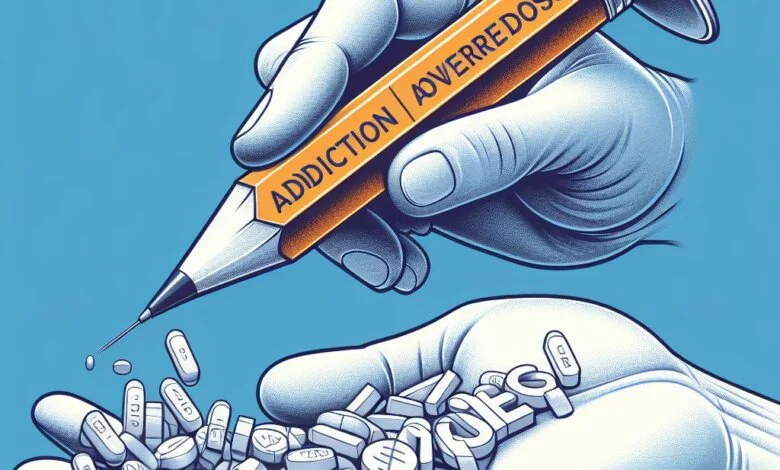
The impetus for development of new drugs is often insight into a condition or disease revealed by medical research. Developers use what they know about a condition to seek a pharmaceutical cure or, at least, a drug that will treat its symptoms.
Take vaccines, for example, which work by putting an antigen into the body that mimics an infection. The body responds to the supposed infection by ramping up its immune response. That advanced priming of the immune system helps fend off the real infection should you be exposed to it.
Drugs are studied, trialed, and approved to treat the condition they were intended to address. However, sometimes when the drug is in use, doctors begin to notice it has beneficial effects on an altogether different condition. This is referred to as the “repositioned drug” phenomenon.
How do drug adaptations occur? How does that affect what they’re prescribed to treat? And what potential might repositioned drugs hold? Here are a few things to know about what happens when medication side effects turn into something much greater.
From Hypertension to Hair to Healing
One prime example of a repositioned drug is minoxidil, originally developed to treat severe high blood pressure. During clinical trials in the 1960s and ’70s, patients reported side effects like nausea, weight gain, increased heart rate, dizziness, and others. But many patients taking the pill, especially balding men, reported their hair was becoming darker and thicker.
Researchers wrote off the hairy side effect as “hypertrichosis,” which is excessive hair growth. They added it to the list of potential side effects. However, by the 1980s, this side effect led to the development of a topical solution containing 2% minoxidil. It was prescribed to treat androgenic alopecia, also known as “male pattern baldness.” By the 1990s, it was available in a 5% solution.
Minoxidil in oral form lowers blood pressure by relaxing the blood vessels. This allows the blood to move more easily, which is why it was a beneficial treatment for hypertension. Apparently, increasing the ease of blood flow also benefits shrinking hair follicles. Increased circulation makes them healthier and more productive, staving off hair loss.
Now researchers are examining other use cases for which increased blood flow could be beneficial, such as the healing of wounds, burns, and scars. After all, a little of a good thing in a topical solution proved to be a potent solution for hair loss. The possibilities for further uses of minoxidil, and other drugs, could be endless.
First This, Then That
There are numerous examples of drugs developed for one purpose then used for treatment of additional conditions. The origin of acetylsalicylic acid — or aspirin — goes back 3,500 years, when it was used as a painkiller and fever reducer. It’s now also used to treat cardiovascular and cerebrovascular diseases, thanks to its ability to prohibit platelet buildup.
Sildenafil was originally developed to treat pulmonary hypertension and chest pain caused by a lack of cardiac blood and oxygen. Like minoxidil, sildenafil increases blood flow. Researchers found it did little for chest pain, but many men experienced penile erections within 30 minutes or so after taking it. It’s still used to treat pulmonary hypertension, but most now know it as the “little blue pill”: Viagra.
Dimethyl fumarate was used on shoes and furniture to inhibit mold growth. It’s now prescribed for multiple sclerosis and psoriasis. Diazepam, or Valium, was prescribed as an anti-anxiety medication before being used to treat tremors, insomnia, and muscle spasms.
Drugs are developed by companies that then subject them to stringent and years-long clinical trials. It’s most often during those trials, when participants are followed closely, that doctors record side effects. Drug repositioning therefore doesn’t happen by accident, but rather through the power of observation, data gathering, and analysis.
The Future of Drug Repositioning
Drug companies spend billions of dollars and invest years on the research and development of new medications. It is no surprise that they would look for additional products that could piggyback on the development of the target drug. For companies, spreading the R&D investment between two or more products is far more lucrative than one.
There is also the issue of privacy to consider. Data is the foundation of drug development, whether for a single use or multiple ones. But that data is gathered from individuals who enjoy rights to medical privacy. Consequently, the sharing of information that could lead to finding repositioned drugs could be inhibited by patient privacy regulations.
Finally, artificial intelligence and machine learning are playing increasingly significant roles in drug development. AI and ML can gather, review, and analyze vast amounts of data points far faster than humans. However, these technologies lack human skills historically vital to drug repositioning, such as socialization, creativity, and the ability to multitask.
The fact is that researchers are highly attuned to looking for possibilities other than the initial hypothesis in drug development. Neither AI nor ML alone can replace humans in this quest. But they can make finding alternate uses for drugs that treat other conditions and diseases a reality far sooner.
Out of the Wings and Onto Center Stage
Sometimes, someone or something you don’t expect becomes the star of the show. Glenn Frey and Don Henley were in Linda’s Ronstadt’s band before they launched The Eagles. Moving from the musical to the medical world, more sildenafil is now used to produce Viagra than medication for pulmonary hypertension.
How a repositioned drug arrives on the market isn’t what’s most important — its effectiveness is. Arriving “by accident” is not a bad way to appear, especially when it lets a useful medication take center stage.











